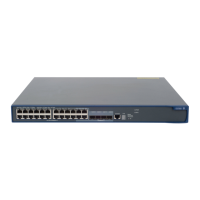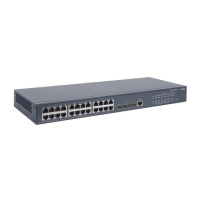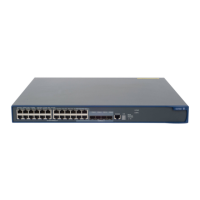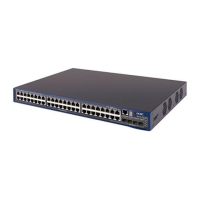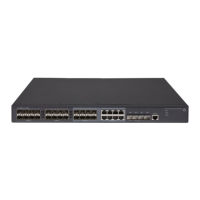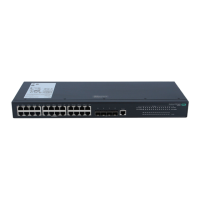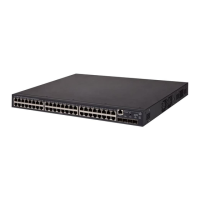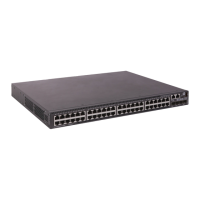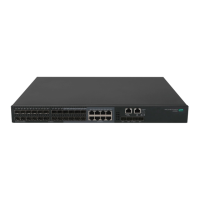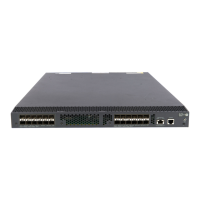208
address to the server, and forwards the HABP request to its attached switches. HABP packets are
transmitted in the VLAN to which the HABP client belongs.
Follow these steps to configure an HABP client:
To do… Use the command… Remarks
Enter system view system-view —
Enable HABP habp enable
Optional
Enabled by default
Configure HABP to work in client
mode
undo habp server
Optional
HABP works in client mode by
default.
Specify the VLAN to which the
HABP client belongs
habp client vlan vlan-id
Optional
By default, an HABP client belongs
to VLAN 1.
NOTE:
The VLAN to which an HABP client belongs must be the same as that specified on the HABP server for
transmitting HABP packets.
Displaying and maintaining HABP
To do… Use the command… Remarks
Display HABP configuration
information
display habp [ | { begin | exclude
| include } regular-expression ]
Available in any view
Display HABP MAC address table
entries
display habp table [ | { begin |
exclude | include }
regular-expression ]
Available in any view
Display HABP packet statistics
display habp traffic [ | { begin |
exclude | include }
regular-expression ]
Available in any view
HABP configuration example
Network requirements
As shown in Figure 77, access devices Switch B and Switch C are connected to Switch A. 802.1X
authentication is configured on Switch A for central authentication and management of users (Host A
through Host D).
• For communication between Switch B and Switch C, enable HABP server on Switch A, enable
HABP client on Switch B and Switch C, and specify VLAN 1 for HABP packets.
• On Switch A, configure the HABP server to send HABP request packets to the HABP clients in VLAN
1 at an interval of 50 seconds.
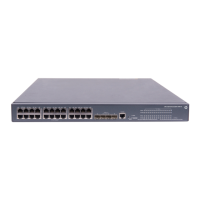
